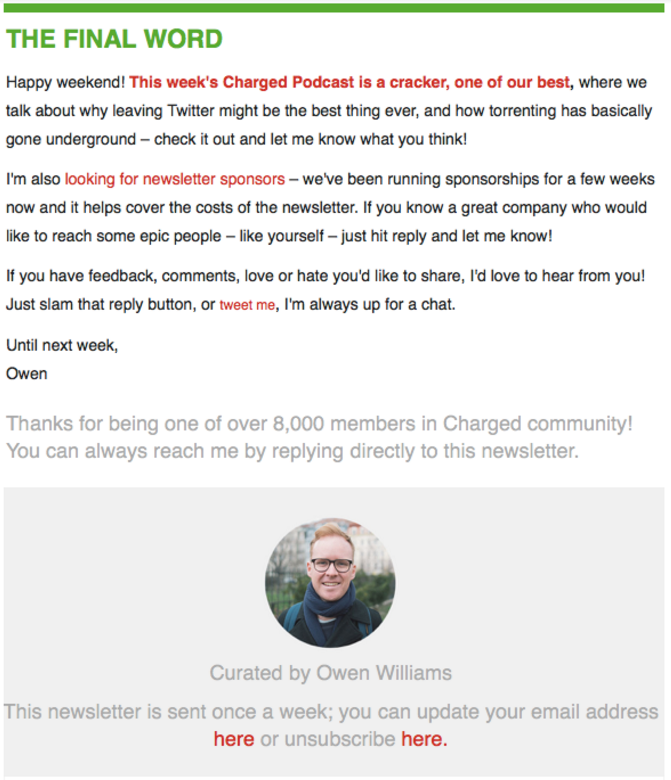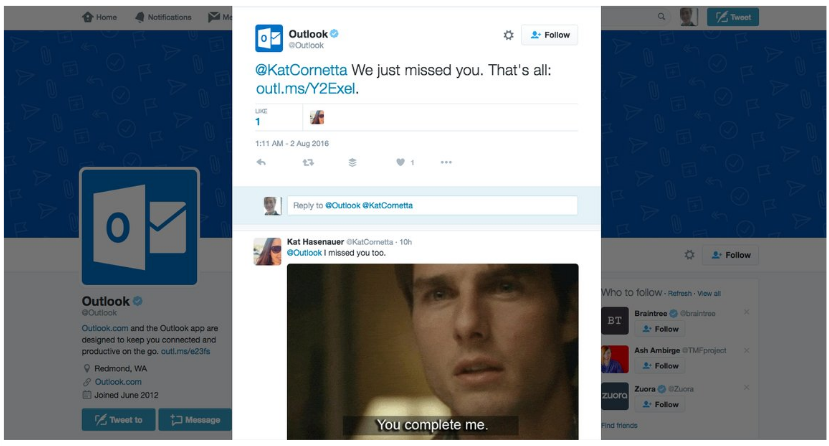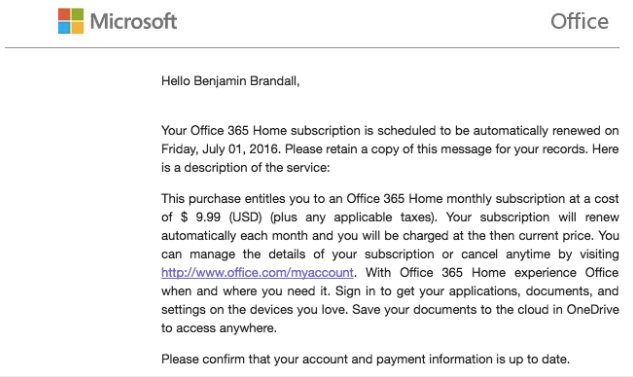Think about the emails you roll your eyes at and don’t open versus the ones you read willingly — even if they don’t have anything necessary inside. What’s the difference?
Consider the contrast between an email from your local council regarding adjustments to water tax and a marketing email from a strong, recognisable and personable brand. They’re both committed to sending information, but they do it in different ways. The key difference is that one offers experience and the other doesn’t.
What are the elements of customer experience, then? It’s something you can instantly recognise because it’s the difference between an email that sounds like it’s been assembled by the generic business robot that tends to put together 80% of marketing emails, and one that’s been crafted by a human out of respect and friendliness towards their brand, company and customer.
Here’s an example of a total failure of a marketing email as far as customer experience is concerned:
What’s your first reaction? It makes me feel as if I’ve accidentally been looped in on a conversation between two Liverpool council officials discussing an excerpt from a housing development white paper. That’s the kind of customer experience this company offers its customers.
Let’s take a look at the other end of the scale — an excerpt from an email newsletter from Owen Williams’ Charged that cares more about experience than any other single factor:
Just like the Liverpool apartments email, it’s still selling something. It’s getting you over to the podcast and offering you to sponsor the newsletter. But it’s also providing an experience. And that’s why I open it every weekend without fail, and why it’s one of my favourite newsletters.
It’s from a real human — you can see his name and face there. He’s talking directly to me, and writes it like a message to a friend. These are qualities that the other email does not possess in any way.
By providing a great customer experience, Owen’s doing marketing exceptionally well. In fact, since subscribing to his newsletter I’ve been in contact with him, which is a win for his company’s marketing because people are more likely to buy from brands they know and like.
That’s why marketing and customer experience are one and the same.
Two sides of the same coin
Customer experience and marketing can’t be viewed as separate things. If you try to separate them, you’ll find yourself in a labyrinthine quandary of contradictions and, eventually, an existential crisis. Here’s helpful way of thinking about it.
The customer experience is all about consistency
For an interaction to actually provide an experience, there needs to be consistency. Our brains like consistency. It helps to build trust, meet expectations and not disappoint or astonish your customers.
A customer experience I noticed recently that stuck out as being odd was one from Microsoft’s Outlook on Twitter. It serves as the perfect example of a disconnect between expectations and reality, probably caused by confusion in the middle of Microsoft rebrand.
What kind of customer experience do you connect Microsoft with? Personally, I associate it with not a particularly strong, friendly or effective one, even if it was pretty good in the past. I don’t find their software personable, or even like it was built for real humans. So it’s naturally a surprise when you see their Outlook support interacting in such a human way over Twitter with customers who have an issue:
Emojis, gifs, casual language, jokes? That’s not the Microsoft I know and struggle with. It’s not a bad thing that they’re moving towards treating customers like people instead of data points, but it does still fit in with my point: it’s inconsistent, especially when their communications usually feel like this:
Pretty dry and impersonal, right? All the way from the “Hello Benjamin Brandall” (to make sure they don’t accidentally reach the other Benjamin that shares my email address).
Emails can provide a solid, consistent customer experience
Even in the age of Snapchat, Twitter, and countless other communication platforms, email is still the most effective way to engage your audience, despite the fact that some clients will bundle newsletters up and make them harder to discover in your inbox.
Just think about it — email open rates are around 20%, but what about tweet engagement rates? They sit around 0.07% for brands. That’s because an inbox is much more focused. While you might follow 350 people on Twitter, you probably only subscribe to around 20 or 30 newsletters, and those get sent out periodically, not in random bursts.
Because of the personal nature of email (brands interact with you in the exact same space as your parents), it’s the best place to create a strong customer experience to back up your marketing efforts.
Even though email is as much about customer experience as it is about marketing, they’re not mutually exclusive. It isn’t possible to send a marketing email that doesn’t create a customer experience, even if it’s a dry, negative one. Think about that when you’re optimising your marketing emails — ask yourself: what experience is this creating for my customers?





